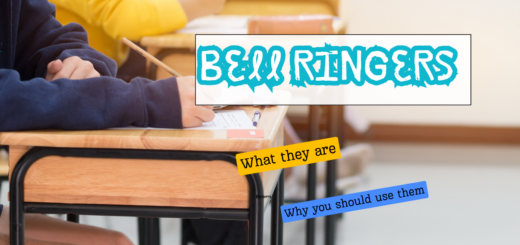Ten Ways Adult Students Differ from K-12 Students

There are many similarities with the best teaching practices for K-12 students and adults, but there are a few ways adults expect to be treated differently. Failure to understand these differences can result in poor attention in the GED classroom and low motivation. Here are a few things to keep in mind when working with adults:
- Life Experiences. Adults bring more life experiences into the classroom, and they may feel disrespected if these experiences are ignored. For instance, in a K-12 classroom, information about 9/11/2001 may be completely new. Therefore, an informational approach might be taken. However, your adult students will have a different perspective. Most will recall that horrible day, so a class discussion about where they were when they found out might be a great anticipatory set.
- Anxiety. Although any student can have anxiety, your adult students are much more likely to experience this emotion. GED students often didn’t do well in school when they were adolescents, so they may question whether or not they will do well on a second try. Because of this, it is essential that adult students be recognized for even small successes. It may just be the fuel that keeps them coming to class.
- Results Oriented. Adults want results, and they need to see incremental results in order to stay motivated. They usually have a very specific goal, earning their GED, and if they don’t feel like they are progressing toward that goal, they will lose their drive. Show adult students their progress every chance you get and show them next steps so that they can be actively involved in their learning plan.
- Learning may take longer. It is a sad fact that our cognitive abilities lessen as we get older, so be prepared to spend a little extra time on each lesson. You may even want to have some back up activities planned in case a concept isn’t getting through. In addition, you will want to review already-learned material to make sure that your adult students don’t forget what they have learned.
(Side note: I have created a packet of 40 Bell Ringers to use as morning review for GED students. You can purchase this resource by clicking the link below.)
5. Deeper Engagement. Although it may take your adult students longer to retain information, they will be able to dive into subjects a little deeper. This will allow you to have group discussions that wouldn’t be possible with younger students, and it will enable you to stick with a topic for longer. Longer passages can be utilized as well as more intense critical thinking activities.
6. Motivation. When you are teaching a class that has a small age range (10-13 years old, for example) it’s fairly easy to find out what motivates your students as as a group. In an adult education classroom, on the other hand, you may have students ranging from 18 to 90, so you will need to individualize motivating influences. For our adults, it is especially important that we learn as much about each individual as possible so that we can keep our students coming back to class.
7. If adults don’t like you as a person, they won’t return to class. K-12 students have no choice; they will bond with some teachers and not with others. Their attendance is compulsory, so not bonding with a younger student isn’t as crucial as bonding with our adults. Find some way to relate to your adult students, or they will most likely quit class, perhaps coming up with excuses why now might not be the best time for them to work toward a GED.
8. Resistance to change. Adult students will have more ideas and opinions than younger students, and they will be a little less flexible. They may have a certain way of doing things, and they might not like it if you try to change their process. Therefore, certain classroom routines might appeal to our adults, and others will not be appreciated. Learn your students, and be aware of subtle rebellions to follow your instructions. The best way to pick up on clues to this resistance is to look for changes in body language and in participation. If you have a gut feeling that something isn’t working, try doing something else.
9. Control. Adult students want to be in control of their learning. Therefore, it is important to include them in decisions. If you think that they may need to switch subjects due to burn out, explain that to them, and ask their opinion. You can also ask them what materials they like best, if they prefer to work in a group, etc. The important thing is to ask and to listen. Simply put, communication is crucial when working with adults.
10. Use positive reinforcement. Negative reinforcement will only make you lose a student. Positive reinforcement, however, will increase motivation and self-confidence. You have to be a cheerleader when you work with adults because students with low self-esteems don’t tend to test well. Give oral praise and tangible praise. Maybe try printing out a certificate for a student when a milestone is reached, and announce this achievement to the class. If a student struggles with the material but works hard every day, reward them for that. We all love receiving praise, and you will have a class full of motivated students if you do this well.
In conclusion, it’s a wonderful experience teaching both adults and children, but we can’t treat them the same. Adults have different motivators, opinions, and experience and these things need to be recognized. Get to know your students and involve them in every step of their learning and you are sure to have a successful year.





